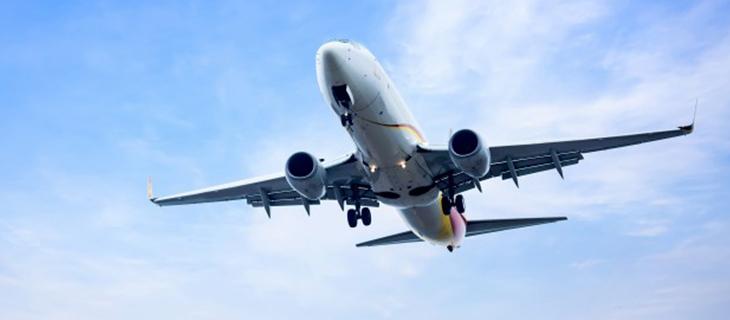5 Types of Plastic Used in the Aerospace Industry
Plastic has a major component in the aerospace industry since 1970. They reduce the weight of the aircraft and improve fuel efficiency. When it comes to military aircraft, they help extend flight range with help jets evade radar detection. Components for propulsion and navigational functions, structural elements and interior components are all made out of plastic. Plastic has several advantages which make them an ideal choice in the aerospace industry:
- Lightweight
- Corrosion-resistance
- Impact-resistance
- Chemical-resistance
- Durable
Let us look at 5 types of plastic used in the aerospace industry:
1) Polyetheretherketone
Polyetheretherketone is the preferred polymer in the aerospace industry. It is used in conditions where it may be exposed to low temperatures and atmospheric particles. Its applications can be found in pump gears and valve seats. It can withstand large doses of radiation and has great resistance to hydrolysis. This means it can be exposed to high-pressures of water and steam without degrading. Furthermore, it exhibits great thermal and mechanical properties that include low flammability and creep resistance.
2) Thermosetting Polyimide
Thermosetting Polyimide makes for a great choice in various structural applications in the aerospace industry. It is used in insulators and electrical spacers for threaded nuts and other components. It has high resistance to chemicals and exhibits excellent mechanical properties. The biggest advantage that Thermosetting Polyimide offer is the high ductility than ceramics and lower weight than metals.
3) Polyamide-imide (PAI)
PAI is preferred over metal components in the aerospace industry. Reason being, it is resistant to most chemicals and radiation at room temperature and is flame retardant. This doesn’t give off smoke when burning. What’s more, it has superior mechanical strength and can retain up to 500 °F.
4) Polychlorotrifluoroethylene (PCTFE)
PCTFE makes for a great material for components that are used in or outside corrosive environments. It is a fluorochemical plastic with a blend of physical and mechanical properties. In addition, it is chemical and fire resistance and has low moisture absorption. It can tolerate extreme temperatures ranging from -400 °F to +400 °F and exhibits great electrical properties. This makes it an apt choice for aerospace applications.
5) Polytetrafluoroethylene (PTFE)
PTFE is used for insulating cables and myriad wires in an aircraft. It is a fluorocarbon polymer and is an electrical insulator. It has high tear resistance, low flammability and can retain its properties in aerospace conditions.
With their lightweight properties, resistance to corrosive materials and high temperature, plastic is an ideal choice for the aerospace industry. If you are in the aerospace industry then Plastivision is a great platform for you to showcase your product range and network with industry professionals. Book your booth today!
Leave a Reply Cancel reply
Recent Posts
- Understanding The Materials That Are Used To Build Plastic Toys
- All You Need To Know About Food-grade Plastics
- A Glance At The Materials That Boost The Performance Of Plastics
- Understanding The Importance Of Exploring New Business Opportunities In The Plastic Industry
- Understanding The Importance Of Investing in R&D For The Plastic Industry
Categories
- 3D Printing
- AIPMA
- Automation
- Automobile Sector
- Bio Plastics
- Environment
- Innovations In Recycling
- Latest Innovations
- Molds & Dies
- News
- Packaging Industry
- Plastic
- Plastic Application
- Plastic Industry
- Plastic Market
- Plastic Myths
- Plastic News From The World
- Plastic Packaging
- Plastic Products
- Plastic Recycling
- Plastic Solar Cells
- Plastic Toys
- Plastic Waste
- Plastic World
- Plastics
- Plastics And Their Applications
- Plastics In Agriculture
- Plastics In Healthcare
- Plastics In Medical Industry
- Plasticulture
- Processing Machinery
- Recycling Machines
- Robotics
- Uncategorized
- Virtual Reality
Archives
- November 2023 (3)
- October 2023 (2)
- September 2023 (3)
- August 2023 (3)
- July 2023 (3)
- June 2023 (3)
- May 2023 (2)
- April 2023 (2)
- March 2023 (2)
- February 2023 (2)
- January 2023 (2)
- December 2022 (3)
- November 2022 (1)
- October 2022 (1)
- September 2022 (2)
- August 2022 (1)
- July 2022 (3)
- May 2022 (3)
- March 2022 (2)
- February 2022 (1)
- January 2022 (1)
- September 2021 (2)
- August 2021 (3)
- July 2021 (4)
- June 2021 (4)
- May 2021 (3)
- April 2021 (2)
- March 2021 (4)
- November 2019 (8)
- October 2019 (8)
- September 2019 (8)
- August 2019 (8)
- July 2019 (8)
- June 2019 (8)
- May 2019 (8)
- April 2019 (8)
- March 2019 (8)
- February 2019 (11)
- January 2019 (8)
- December 2018 (8)
- November 2018 (12)
- October 2018 (12)

